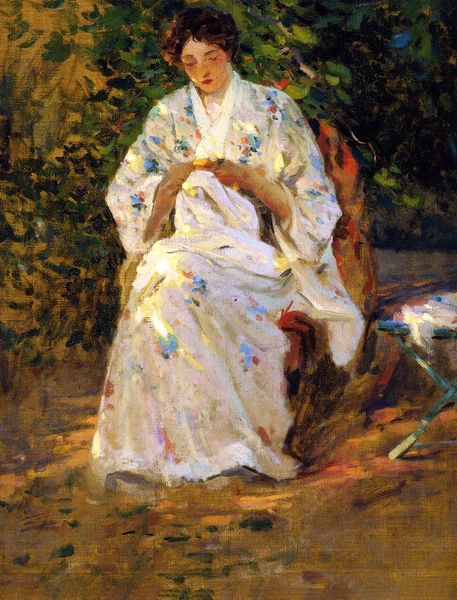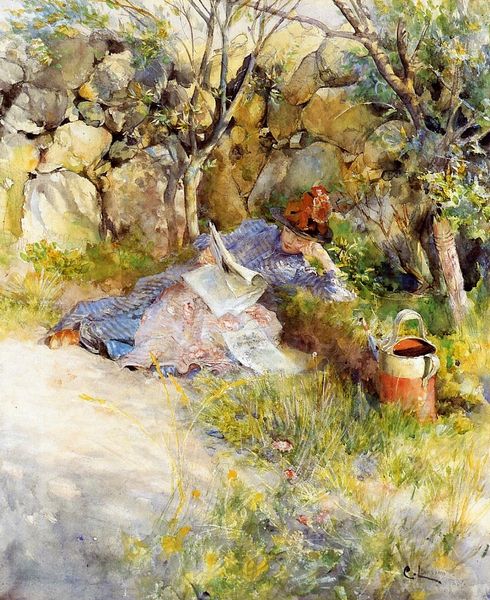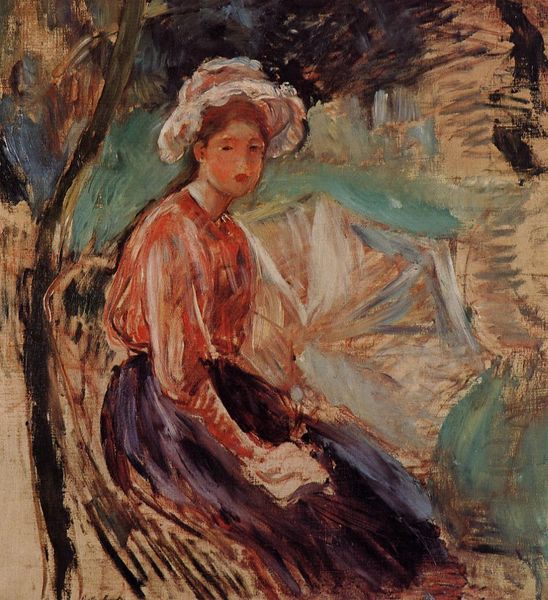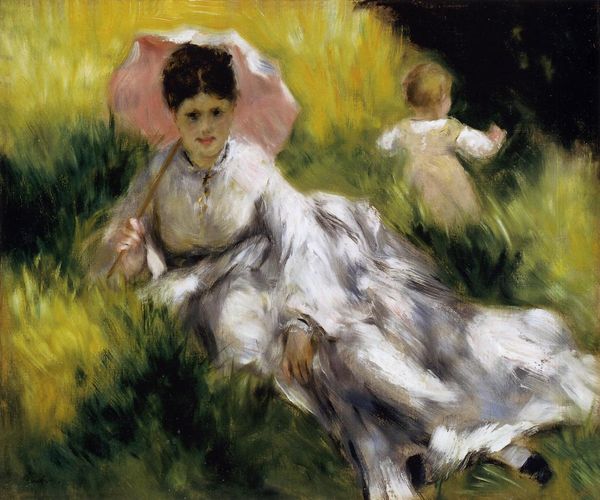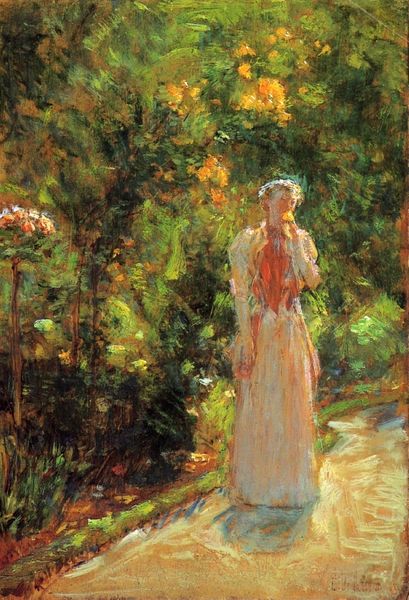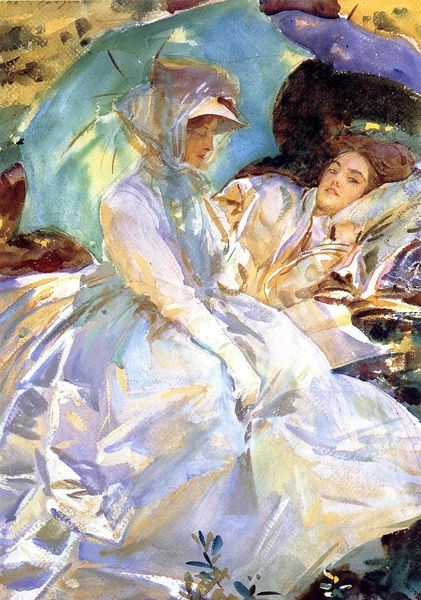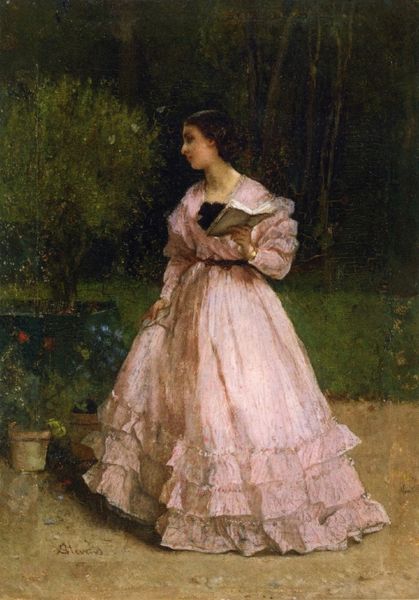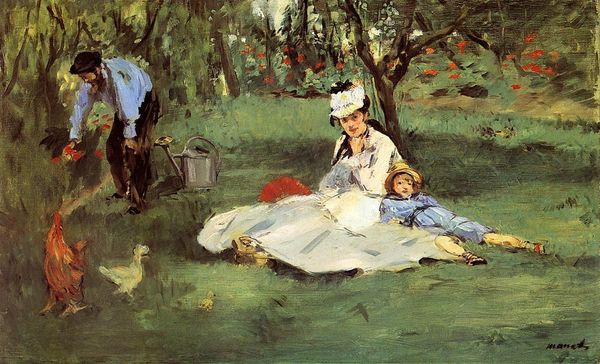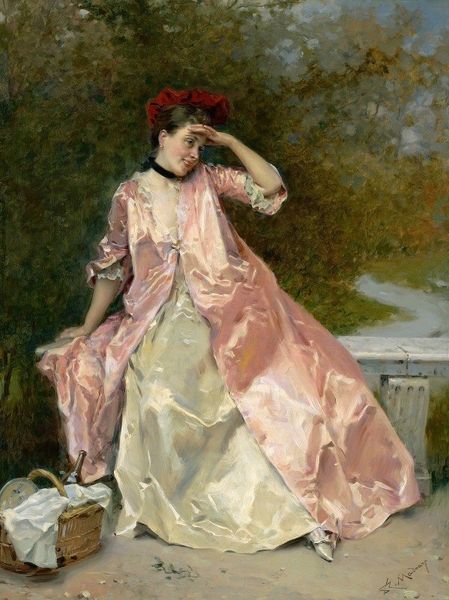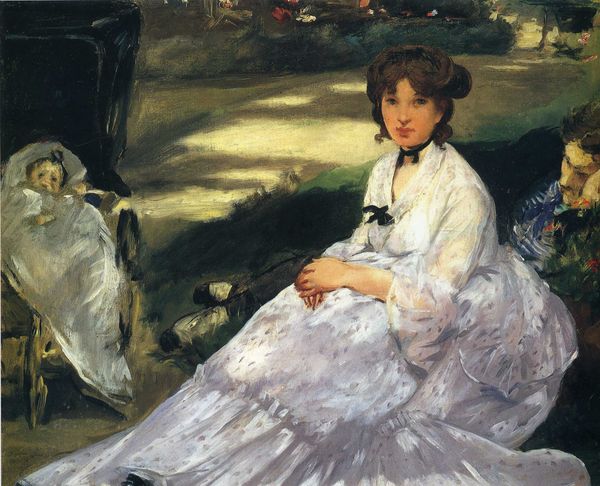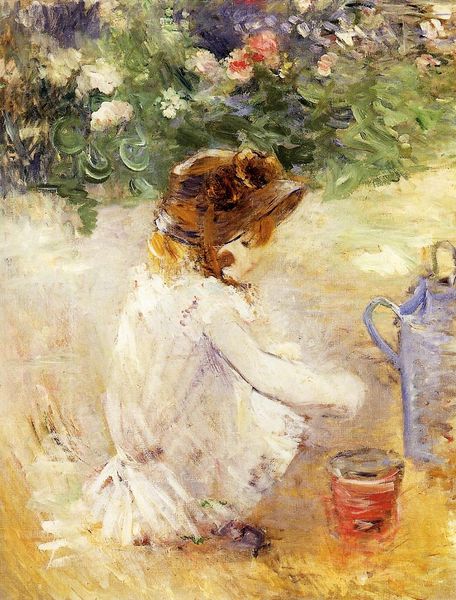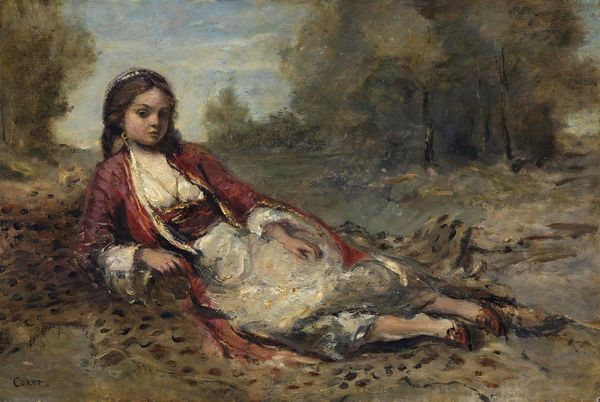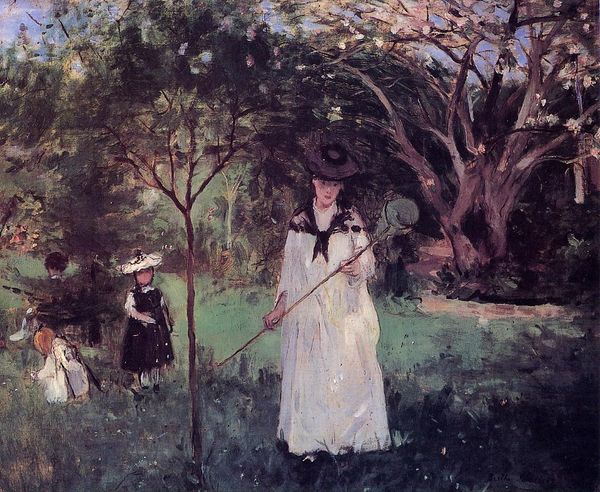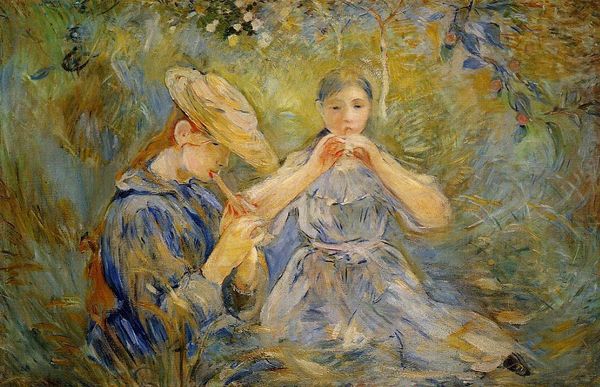
Dimensions: 53.97 x 66.04 cm
Copyright: Public domain
Curator: Ah, here we are, facing John Singer Sargent’s "The Pink Dress," completed around 1912 using oil paint. What springs to mind for you? Editor: The figure feels almost suspended in amber light. There's a kind of melancholic stillness to the painting, despite its vibrancy, that really catches my attention. Is this connected to any period of transition that the painter may have faced? Curator: Absolutely, the turn of the century saw rapid societal changes impacting art deeply. Sargent, already renowned for his society portraits, found himself at a pivotal moment. He grew increasingly frustrated with commissioned work, yearning for artistic freedom. This shift reflects an inward gaze. Editor: In terms of composition, that contrast between the darkness near the trees in contrast to the illumination that surrounds her really pops out. Can we maybe talk a bit more about how that could emphasize both her emotional detachment from society, and even her sense of place? Curator: Exactly! The garden becomes this contemplative, liminal space, neither fully private nor entirely public. Consider the color pink itself; once associated with masculinity, by the 20th century it was being marketed toward women, particularly young girls. This is reinforced even with the title choice of the work. Is the image subtly playing with emerging ideas about femininity and the performative nature of identity? Editor: Fascinating point about the gendering of pink! I'm also wondering about that closed umbrella… Is that more than just an element of realistic staging, or is it symbolic of shelter or perhaps a desire for shielding in a changing world? It also is the only place the artist has chosen to display this striking dark color. Curator: The umbrella introduces intriguing shadows that play against the sunlight and offers a layer of complexity. The dress, despite the artwork's name, appears to be of a light coloration, perhaps a slightly bleached shade of the title itself. Considering Impressionism’s focus on transient moments, it is hard to overlook the symbolic possibilities when this woman appears frozen in thought. Editor: Well, considering the subtle shifts in gender and societal norms this offers a glimpse into, the piece still asks piercing questions. A worthwhile journey to consider modern identities indeed. Curator: I completely agree. It’s in those nuanced spaces, those fleeting, unnameable shades, where a work really makes its impact and invites us to look closer not just at art history, but ourselves.
Comments
No comments
Be the first to comment and join the conversation on the ultimate creative platform.
